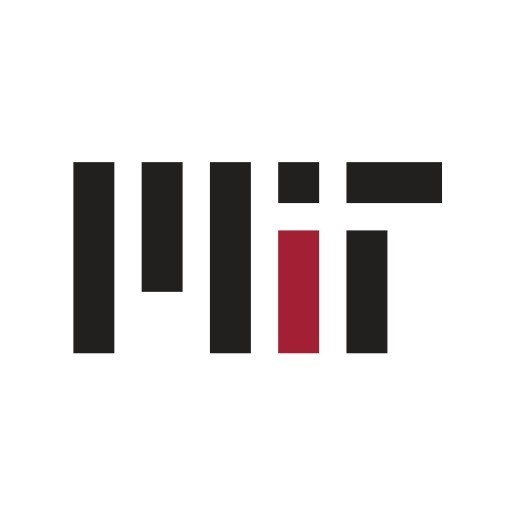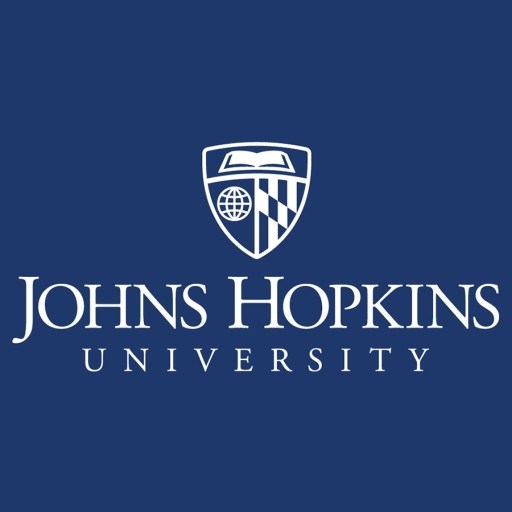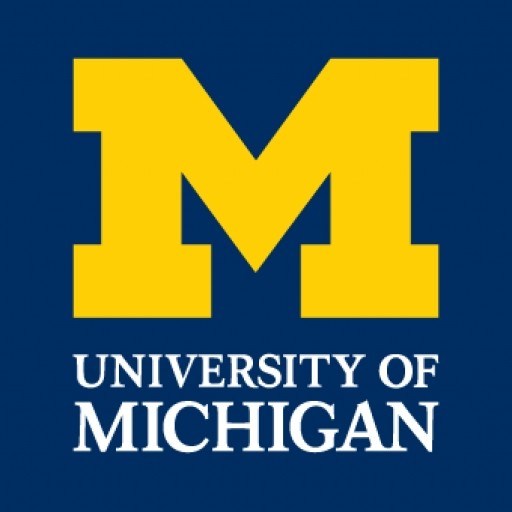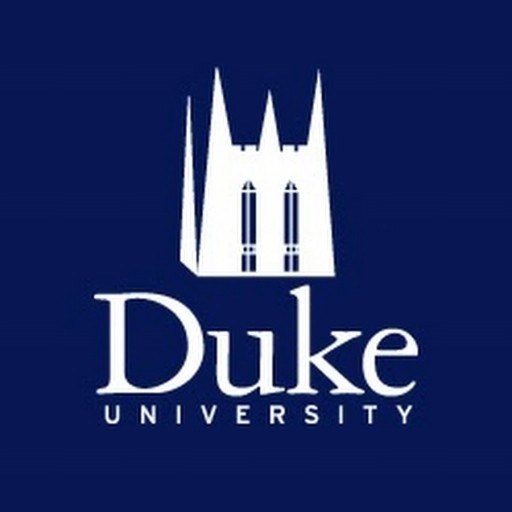Photos of university / #mitpics
The Microbiology Graduate PhD Program is an MIT-wide program that is designed to provide students with broad exposure to modern areas of microbiology and depth in the chosen area of thesis work. There are more than 50 faculty in 10 different departments and divisions that study microbes. Graduate students admitted to the program will join a vibrant, thriving microbiology community on the MIT campus and will receive training in a broad range of areas in microbiology.
Required course work (4)
Students with a particularly strong background in any of the below areas may have the option of placing out of the related course; approval of the Graduate Education Committee is required.
-
Methods and Problems in Microbiology - 7.492J (Same subject as 1.86J, 20.445J) M. Laub
Students will read and discuss primary literature covering key areas of microbial research with emphasis on methods and approaches used to understand and manipulate microbes. Open to first-year Microbiology and Biology students; other students by permission of instructor. -
Microbial Genetics and Evolution - 7.493J (Fall) (12 units) A. D. Grossman, G. Fournier
Required of students in program, but open to others. Will cover aspects of microbial genetic and genomic analyses, central dogma, horizontal gene transfer, and evolution. -
Quantitative Biology of Molecular Systems - 7.57 (Spring) (12 units) P. Gupta, A. Regev Introduces the fundamental concepts and tools of quantitative approaches to molecular and cellular biology. Covers a wide range of mathematical, computational, and statistical methods, although no previous expertise in these areas is required. Focus is on understanding quantitative approaches through the analysis of particular problems and examples drawn from classical genetics, molecular biology, cell biology, genomics, and systems biology.
-
Biochemistry.
One of the following courses:
Principles of Biochemical Analysis - 7.51 (Fall) (12 units) A. Keating,R. Sauer, F. Solomon
Fundamental principles of biochemistry. Analysis of the structure and mechanism of catalytic and regulatory macromolecules.
OR:
Biological Chemistry II - 7.80 (Spring) (12 units) A. Y. Ting, E. Nolan
Advanced treatment of biochemical mechanisms that underlie biological processes. Topics include macromolecular machines such as the ribosome, the proteosome, fatty acid synthases as a paradigm for polyketide synthases and non-ribosomal polypeptide synthases, metal cluster assembly and oxidative stress. Emphasis is on experimental methods used to unravel these processes and how these processes fit into the cellular context and coordinate regulation.
Research Rotations in Microbiology - 7.499 (Fall, IAP, Spring) (12 units) Staff
Introduction to faculty participating in the Interdepartmental Microbiology graduate program and
a series of lab rotations. During the first year, students will rotate through three labs of MIT faculty
that participate in the Microbiology Graduate Program. These rotations will help provide students
a broad exposure to microbiology research and will be used to select a lab for their thesis
research by the end of the first year. Given the interdisciplinary nature of the program
and many research programs, students may be able to work jointly with more than one research
supervisor. Required and limited to graduate students in the microbiology program.
Elective course work (3):
Students must take three elective courses, totaling 36 units, from the following list. Electives can be chosen to provide depth in a specific area of interest or additional breadth in training. Listed below are subjects pre-approved to fulfill the elective requirement. Courses from some other areas may also fulfill the requirement, with the approval of the Graduate Education committee.
Fall Electives:
Class information subject to change, please verify availability online in the MIT Course Listing.
Environmental Microbiology – 1.89 (Fall) (12 units)
Provides a general introduction to the diverse roles of microorganisms in natural and artificial environments. Topics include cellular architecture, energetics, and growth; evolution and gene flow; population and community dynamics; water and soil microbiology; biogeochemical cycling; and microorganisms in biodeterioration and bioremediation. 7.014 recommended as prerequisite; students taking graduate version complete additional assignments. M. Polz
Principles of Bioinorganic Chemistry – 5.062 (Fall) (6 units) (Part I)
Delineates principles that form the basis for understanding how metal ions function in biology. Includes the choice, uptake and assembly of metal-containing units; metal-induced folding of biomolecules; control of metal ion concentrations in cells; electron-transfer chemistry; atom and group transfer chemistry; protein tuning of metal properties; and applications to diagnosis and treatment of disease. Introduces additional topics to expose students to exciting new advances in the field, such as medicinal application of inorganic chemistry; multi-component enzyme systems (e.g.,nitrogenase, hydrogenase, and photosystem II); and metalloprotein engineering and design (e.g., the conversion by mutagenesis of existing metalloprotein scaffolds to achieve novel functions). S. Lippard, E. Nolan
Advanced Biological Chemistry – 5.52 (Fall) (12 units)
Concepts and methods of biochemistry, with emphasis on quantitative aspects of problem analysis and fundamentals of experimental methods. Intended for first-year graduate students with a strong interest in biological chemistry.
A. M. Klibanov
Microbial Physiology – 7.62 (Fall) (12 units)
Biochemical properties of bacteria and other microorganisms that enable them to grow under a variety of conditions. Interaction between bacteria and bacteriophages. Genetic and metabolic regulation of enzyme action and enzyme formation. Structure and function of components of the bacterial cell envelope. Protein secretion with a special emphasis on its various roles in pathogenesis. Additional topics include bioenergetics, symbiosis, quorum sensing, global responses to DNA damage, and biofilms. Students taking the graduate version are expected to explore the subject in greater depth. G. C. Walker, A. J. Sinskey
Systems Biology – 8.591J/7.81J (Fall) (12 units)
Introduction to cellular and population-level systems biology with an emphasis on synthetic biology, modeling of genetic networks, cell-cell interactions, and evolutionary dynamics. Cellular systems include genetic switches and oscillators, network motifs, genetic network evolution, and cellular decision-making. Population-level systems include models of pattern formation, cell-cell communication, and evolutionary systems biology. Students taking graduate version explore the subject in more depth.
J. Gore
Metabolic and Cell Engineering – 10.544 (Fall) (9 units)
Presentation of a framework for quantitative understanding of cell functions as integrated molecular systems. Analysis of cell-level processes in terms of underlying molecular mechanisms based on thermodynamics, kinetics, mechanics, and transport principles, emphasizing an engineering, problem-oriented perspective. Objective is to rationalize target selection for genetic engineering and evaluate the physiology of recombinant cells. Topics include cell metabolism and energy production, transport across cell compartment barriers, protein synthesis and secretion, regulation of gene expression, transduction of signals from extracellular environment, cell proliferation, cell adhesion and migration. Gr. Stephanopoulos
Statistical Thermodynamics – 10.546J/5.70J (Fall) (12 units)
Develops classical equilibrium statistical mechanical concepts for application to chemical physics problems. Basic concepts of ensemble theory formulated on the basis of thermodynamic fluctuations. Examples of applications include Ising models, lattice models of binding, ionic and non-ionic solutions, liquid theory, polymer and protein conformations, phase transition, and pattern formation. Introduces computational techniques with examples of liquid and polymer simulations. A. Willard, J. Cao
Systems Microbiology – 20.106J (Fall) (12 units)
Introductory microbiology from a systems perspective - considers microbial diversity and the integration of data from a molecular, cellular, organismal, and ecological context to understand the interaction of microbial organisms with their environment. Special emphasis on specific viral, bacterial, and eukaryotic microorganisms and their interaction with animal hosts with focus on contemporary problems in areas such as vaccination, emerging disease, antimicrobial drug resistance, and toxicology.
E. Alm, J. Runstadler
Biomolecular Kinetics and Cellular Dynamics –20.420J(Fall) (12 units)
Fundamental analysis of biological rate processes using approaches from biomolecular reaction kinetics and dynamical systems engineering. Topics include binding and hybridization interactions, enzyme reactions, metabolic cycles, gene regulation, receptor/ligand trafficking systems, intra- and intercellular signaling, and cell population dynamics. A. Jasanoff, K. D. Wittrup
Quantitative Genomics – HST508 (Fall) (12 units)
Provides in-depth quantitative understanding of evolutionary and population genetics, comparative and clinical genomics. Each module consists of a series of lectures, a journal club discussion of high impact publications, and lectures that provide clinical correlates. Homework assignments and final projects aim to develop understanding of genomic data from evolutionary principles. L. Mirny, G. Kryukov, S. Sunyaev
Molecular and Cellular Pathophysiology – 20.450 (Fall) (12 units)
Compares the complex molecular and cellular interactions in health and disease between commensal microbial communities, pathogens and the human or animal host. Special focus is given to current research on microbe/host interactions, infection of significant importance to public health, and chronic infectious disease. Classwork will include lecture, but emphasize critical evaluation and class discussion of recent scientific papers, and the development of new research agendas in the fields presented.
J. C. Niles, J. Runstadler
Spring Electives
Class information subject to change, please verify availability online in the MIT Course Listing.
Biophysical Chemistry – 5.64 (Spring) (6 units; second half of semester)
Introduction to the major principles and concepts of biophysical chemistry, with emphasis on the conformational changes and interactions of biological macromolecules, biochemical reaction dynamics, and membranes. Incorporates current experimental methods, thermodynamics, statistical mechanics, and kinetics. A. Shalek
Biophysical Chemistry Techniques – 5.78 (6 units first half) or 7.71 (12 units whole semester) (Spring) (6 or 12 units)
Presents principles of macromolecular crystallography that are essential for structure determinations. Topics include crystallization, diffraction theory, symmetry and space groups, data collection, phase determination methods, model building, and refinement. Discussion of crystallography theory complemented with exercises such as crystallization, data processing, and model building. Meets with 7.71 when offered concurrently. Enrollment limited. C. Drennan, T. Schwartz
Foundations of Algorithms and Computational Techniques in Systems Biology – 6.581J/20.482J (Spring) (12 units)
Illustrates computational approaches to solving problems in systems biology. Uses a series of case studies to demonstrate how an effective match between the statement of a biological problem and the selection of an appropriate algorithm or computational technique can lead to fundamental advances. Covers several discrete and numerical algorithms used in simulation, feature extraction, and optimization for molecular, network, and systems models in biology. Students taking graduate version complete additional assignments. B. Tidor, J. K. White
Computational Systems Biology –6.874J (Spring) (12 units)
Presents computational approaches and algorithms for contemporary problems in systems biology, with a focus on models of biological systems, including regulatory network discovery and validation. Topics include genotypes, regulatory factor binding and motif discovery, and whole genome RNA expression; regulatory networks (discovery, validation, data integration, protein-protein interactions, signaling, whole genome chromatin immunoprecipitation analysis); and experimental design (model validation, interpretation of interventions). Discusses computational methods, including directed and undirected graphical models, such as Bayesian networks, factor graphs, Dirichlet processes, and topic models. Multidisciplinary team-oriented final research project.
D. K. Gifford, T. S. Jaakkola
Molecular Biology – 7.58 (Spring) (12 units)
Detailed analysis of the biochemical mechanisms that control the maintenance, expression, and evolution of prokaryotic and eukaryotic genomes. Topics covered in lecture and readings of relevant literature include: gene regulation, DNA replication, genetic recombination, and mRNA translation. Logic of experimental design and data analysis emphasized. Presentations include both lectures and group discussions of representative papers from the literature. Students taking the graduate version are expected to explore the subject in greater depth. S. Bell, W. Gilbert
Immunology – 7.63 (Spring) (12 units)
Comprehensive survey of molecular, genetic, and cellular aspects of the immune system. Topics include innate and adaptive immunity; cells and organs of the immune system; immunoglobulin, T cell receptor, and major histocompatibility complex (MHC) proteins and genes; development and functions of B and T lymphocytes; immune responses to infections and tumors; hypersensitivity, autoimmunity, and immunodeficiencies. Particular attention to the development and function of the immune system as a whole, as studied by modern methods and techniques. Students taking the graduate version are expected to explore the subject in greater depth. H. Ploegh, L. Steiner
Molecular Basis of Infectious Disease Graduate - 7.66 (Spring) (12 units)
Focuses on the principles of host-pathogen interactions with an emphasis on infectious diseases of humans. Presents key concepts of pathogenesis through the study of various human pathogens. Includes critical analysis and discussion of assigned readings. Students taking the graduate version are expected to explore the subject in greater depth. D. Kim
Regulation of Gene Expression – 7.70 (Spring) (12 units)
Seminar examines basic principles of biological regulation of gene expression. Focuses on examples that underpin these principles, as well as those that challenge certain long-held views. Topics covered may include the role of transcription factors, enhancers, DNA modifications, non-coding RNAs, and chromatin structure in the regulation of gene expression and mechanisms for epigenetic inheritance of transcriptional states. Limited to 40. L. Boyer, M. Gehring
Nucleic Acids, Structure, Function, Evolution and Their Interactions with Proteins – 7.77 (Spring) (12 units)
Surveys primary literature, focusing on biochemical, biophysical, genetic, and combinatorial approaches for understanding nucleic acids. Topics include the general properties, functions, and structural motifs of DNA and RNA; RNAs as catalysts and as regulators of gene expression; RNA editing and surveillance, and the interaction of nucleic acids with proteins, such as zinc-finger proteins, modification enzymes, aminoacyl-tRNA synthetases and other proteins of the translational machinery. Includes some lectures but is mostly analysis and discussion of current literature in the context of student presentations. D. Bartel, U. RajBhandary
Foundations of Computational and Systems Biology – 7.91J/20.490J (Spring) (12 units)
Provides an introduction to computational and systems biology. Includes units on the analysis of protein and nucleic acid sequences, protein structures, and biological networks. Presents principles and methods used for sequence alignment, motif finding, expression array analysis, structural modeling, structure design and prediction, and network analysis and modeling. Techniques include dynamic programming, Markov and hidden Markov models, Bayesian networks, clustering methods, and energy minimization approaches. Exposes students to emerging research areas. Designed for students with strong backgrounds in either molecular biology or computer science. Some foundational material covering basic programming skills, probability and statistics is provided for students with less quantitative backgrounds. Students taking graduate version complete additional assignments. E. Fraenkel, D. Gifford
Biochemical Engineering – 10.542 (Spring) (12 units) Offered Alternate Years (not offered 2016-2017)
Interaction of chemical engineering, biochemistry, and microbiology. Mathematical representations of microbial systems. Kinetics of growth, death, and metabolism. Continuous fermentation, agitation, mass transfer, and scale-up in fermentation systems, enzyme technology.
K. J. Prather
Analysis of Biological Networks – 20.440 (Spring) (12 units)
Conceptual and experimental approaches to analyzing complex biological networks and systems, from molecules to human populations, focusing on human pathophysiology and disease. Moving from single component analysis to pathways and networks, combines didactic lectures with in-depth analysis of current literature. Emphasizes the chemistry and biochemistry of underlying biological processes. Topics include linking genes/SNPs to disease, defining pathways, analysis of pathways in vivo, systems-level analysis, and applications of network biology. First half of term focuses on fundamental biological processes and tools/analyses needed by biological engineers, and the second half elaborates on these fundamentals by covering complex biological processes. Students acquire skills in the fundamentals of grant preparation using an NIH format and make an oral presentation.
F. White, M. Yaffe
Rotations and thesis research
During the first year, students will rotate through three labs of MIT faculty that participate in the Microbiology Graduate Program. These rotations will help provide students broad exposure to microbiology research and will be used to select a lab for their thesis research by the end of the first year. Given the interdisciplinary nature of the program and many research programs, students may be able to work jointly with more than one research supervisor.
Teaching experience
Learning to effectively communicate scientific ideas is an important skill. Students in the Microbiology program will have an opportunity to improve their communication skills through teaching. Each student will serve as a teaching assistant for one semester in an undergraduate or graduate subject related to microbiology. This will typically take place in the second year.
Training in ethical conduct of research
All students will participate in a course on the ethical conduct of research. This will typically take place during the first year.
Qualifying exams
Students will proceed to Ph.D. candidacy after successful completion of a qualifying exam, typically during the second year. Students will submit a written research proposal in the style of a grant or fellowship application based on their planned thesis project. Students will then present and discuss the research proposal with a small committee of faculty
Requirements
- Online application
- Statement of objectives
- Three letters of recommendation
- Transcripts
- English proficiency exam scores
- GRE scores
Standardized Tests:
Graduate Record Examination (GRE)
- General test required, subject test optional
- Institute code: 3514
- Department code: 0212
International English Language Testing System (IELTS)
- Minimum score required: 7
- Electronic scores send to: MIT Graduate Admissions
TOEFL exam scores are not accepted.
Waivers are not offered.
Want to improve your English level for admission?
Prepare for the program requirements with English Online by the British Council.
- ✔️ Flexible study schedule
- ✔️ Experienced teachers
- ✔️ Certificate upon completion
📘 Recommended for students with an IELTS level of 6.0 or below.
Scholarships
Stipend
All students in the program will receive a stipend/salary that is sufficient to support living in the Cambridge/Boston area. The rate-of-pay will be approximately the same as for graduate students in other MIT departments. The Microbiology Graduate Program rate is ~$36,000 for the 2016-2017 academic year.
Financial Support and Fellowships
Students in the program will be financially supported throughout their training. This support includes tuition, stipend, and single person health insurance.
During the first year, students are supported by funds from the Provost's Office and departments in the School of Science, and the School of Engineering. These departments include the Departments of Biological Engineering, Biology, Chemical Engineering, and Civil and Environmental Engineering. In subsequent years, students will be supported as Research Assistants in their thesis lab.
Although students will be supported, they are strongly encouraged to apply for fellowships. Students applying to the Microbiology program are eligible for many of these fellowships, including those detailed on the following websites:
- National Science Foundation (NSF)
- Environmental Protection Agency (EPA)
- National Defense Science & Engineering Graduate Fellowship (NDSEG)
- Under-represented minorities should also see these websites:
- Howard Hughes Medical Institute (HHMI)
- Ford Foundation




